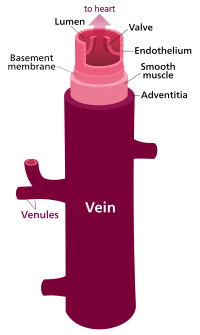
Photo from wikipedia
Address for Correspondence: Dr. K. S. Satheesha, Professor, Department of Anatomy, Srinivas Institute of Medical Sciences & Research Centre, Mukka, Mangalore India. Phone: +91 8762886608, E-Mail: s67in2003Yahoo.com Aim: To check… Click to show full abstract
Address for Correspondence: Dr. K. S. Satheesha, Professor, Department of Anatomy, Srinivas Institute of Medical Sciences & Research Centre, Mukka, Mangalore India. Phone: +91 8762886608, E-Mail: s67in2003Yahoo.com Aim: To check if there is any relation between the compromise of microcirculatory perfusion, infarct location and edema of cerebrum after occluding the middle cerebral artery and to find out if any reperfusion remedy, which can be applied to minimize the infarction and cerebral edema. Materials and Method: The present study included 24 adult monkeys which were procured from the non-forest areas. The cerebral edema was assessed by the specific gravity method. Results: It was observed that, after the permanent occlusion of the MCA for 30min, 4 and 12h, there was insignificant risein the quantity of water of the cerebral hemisphere, when compared to sham operated monkeys. There was no contralateral variation in the water content with the occlusion of one cerebral hemisphere for 30min, 4,12h. At 24h, there was an insignificant increase in the contralateral cerebral hemisphere. Conclusion: We opine that, it is the quantity of the infarct rather than the occurrence or absenteeism ofthe reperfusion, which is responsible for the development of cerebral edema. This study supports the clinician opinion, which reports that the brain edema will not trigger after the thrombolysis and recanalization of the obstructed artery.
Journal Title: International Journal of Approximate Reasoning
Year Published: 2017
Link to full text (if available)
Share on Social Media: Sign Up to like & get
recommendations!